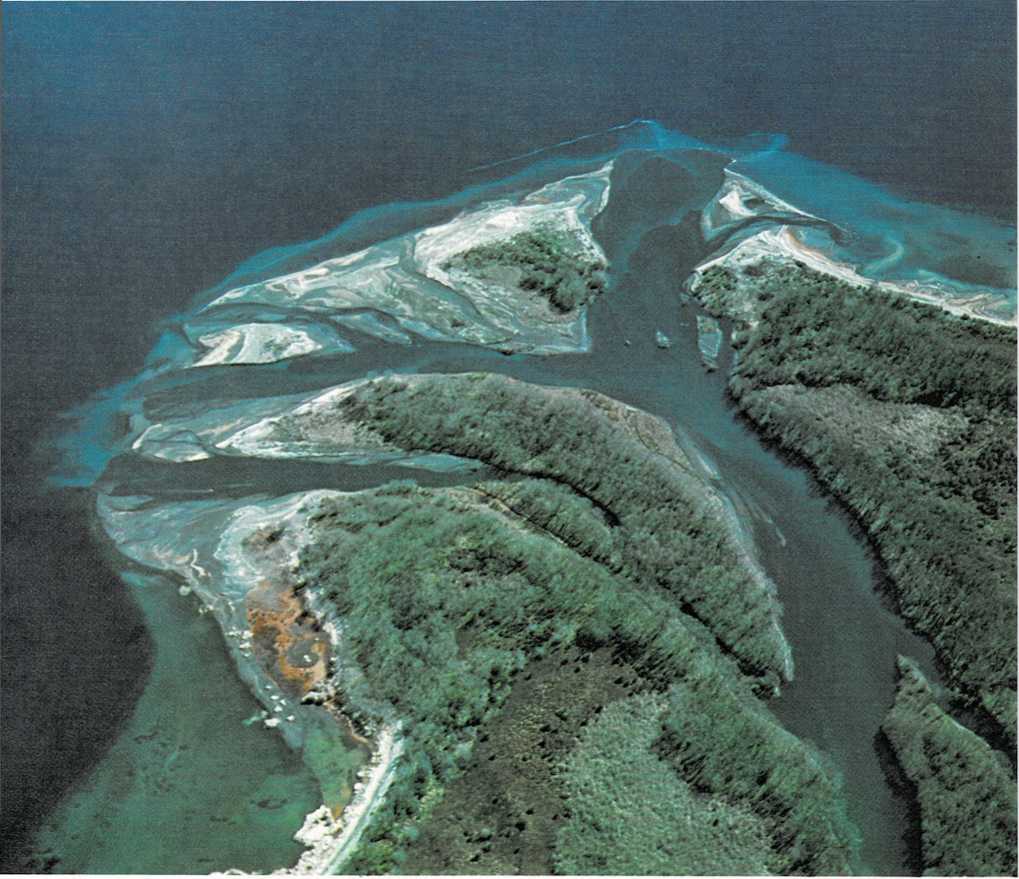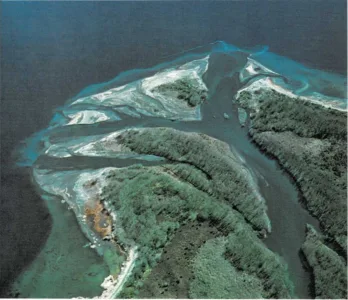Where a river meets the sea
What has its head at one end and its mouth at the other end?
A river! The place where a river begins is called its head. And the
place where it comes to an end, where it flows into a lake or the sea,
is called its mouth.
At the edge of the sea, a river’s mouth is often a sort of dumping
place. As a river moves through the land, it tears sand and soil from
its banks. Rain washes more sand and soil into it. The river carries the
sand and soil with it on its journey to the sea.
If there are no strong tides or big waves at the river’s mouth, the soil
and sand sink down to the bottom. As this soil and sand pile up in the
riverbed, a kind of island forms in the middle of the river’s mouth.
Then the river has two branches that flow into the sea.
Slowly, the island gets bigger. In time, islands form in each of the
branches. These islands split the river into still more branches. And
after a long, long time, there is a great plain at the river’s mouth,
with many branches of the river running through it. This plain, usually
shaped somewhat like a triangle, is called a delta. It gets its name
from a letter of the Greek alphabet called delta, which is shaped like
a triangle.
The deltas of such rivers as the Mississippi, the Nile, and the Amazon
are hundreds of miles (kilometers) wide. These deltas have been growing
for thousands of years. They will keep growing for many years to come.

Tongariro River Delta, New Zealand

